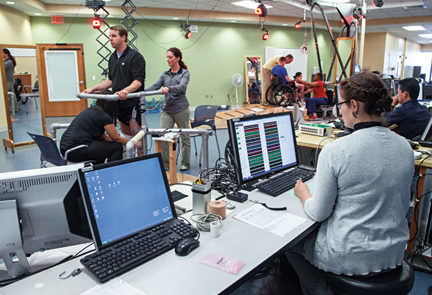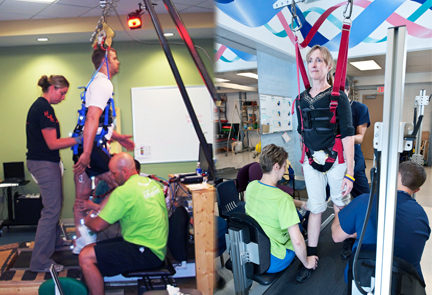Published in Scientific Reports
Published in Frontiers in Neuroscience
Published in Frontiers in Neuroscience
Published in Journal of Clinical Medicine
Dr Behrman’s Research Team are 2023 Vogel Award Recipients
 |
|
The Research Team worked with children with spinal cord injury in clinical trials to determine the safety and efficacy of transcutaneous spinal stimulation to enable upright sitting posture. As dedicated researchers involved in Pediatric SCI rehabilitation, their published work has been recognized by ASIA with the Vogel Award as a best paper for 2023.
|
Published in Clinical Neurophysiology
Honorees of the Susan J. Harkema Pediatric NeuroRecovery Research Award
 |
|
The Susan J. Harkema Pediatric NeuroRecovery Research Award honors Dr. Susan Harkema recognizing her enduring generosity in sharing her vision to advance recovery for adults with spinal cord injury to children with SCI, the contributions of her research as the foundation and catalyst for recovery, and her unwavering support of the Pediatric NeuroRecovery Program. The award was established in 2022 by the Kosair for Kids Center for Pediatric NeuroRecovery.
This Year’s 2022 Recipients are:
- Dr. Yury Gerasimenko
Dr. Gerasimenko is the first recipient of this award, awarded on May 20, 2022.
- Dr. Goutam Singh
Dr. Singh is the second recipient of this award, awarded on May 20, 2022.
|
Pediatric NeuroRecovery Recognized by the Kentucky Network for Innovation & Commercialization for their Advancement in Technology
 |
|
The Kentucky Network for Innovation & Commercialization (KYNETIC) has selected its first round of promising university-born health and medical technologies, each of which will receive training and $33,000 for development.
Six projects were selected this funding cycle, two of which are from UofL:
- Pediatric NeuroRecovery Posture Control System (researcher: Andrea Behrman, PhD, PT, FAPTA)
- Vertify Probe: Intraoperative Device for Measurement of Bone Quality (researchers: Stuart Williams, Maxwell Boakye, and Michael Voor)
KYNETIC is a statewide program supported by $6.6 million in funding, including a $4 million Research Evaluation and Commercialization Hub (REACH) grant from the National Institutes of Health and matching funds. The goal is to advance the most promising biomedical research innovations — including pharmaceuticals, devices and apps — from the state’s eight public universities and the Kentucky Community & Technical College System (KCTCS).
|
New Controller Developed at UofL Improves Home Use of Epidural Stimulation for People With Spinal Cord Injuries
 |
|
When Keith Smith recently got a new tablet, it wasn’t for watching videos or scanning social media. Instead, this tablet allows Smith, who has tetraplegia, more independent control of an implanted Medtronic Intellis neurostimulator, allowing him to better take advantage of the stimulator’s benefits for the disabling effects of a spinal cord injury. Smith received the stimulator two years ago while participating in a study involving individuals paralyzed by spinal cord injuries at the University of Louisville’s Kentucky Spinal Cord Injury Research Center (KSCIRC). The stimulator has provided Smith benefits such as voluntary movement, increased trunk control and improved blood pressure regulation.
|
Spinal Cord Stimulation: Jerod’s Victories Over Paralysis
 |
For the past decade, researchers at the Kentucky Spinal Cord Injury Research Center have studied the impact of epidural stimulation, which is a small amount of electrical current applied to the spine, on people with spinal cord injury. The technology has gotten better over the past few years, and now some patients are achieving what most believed would never be possible. One man celebrates his personal victory over paralysis, one milestone at a time. At the Kentucky Spinal Cord Injury Research Center, scientists use programmed electrical stimulation to help patients stand and control their core. Jerod is one of 38 patients with a stimulator inside his body. “The electrode is a 16-electrode array. It contains 16 contacts, and it is implanted in what’s called the lumbar sacral spinal cord,” Claudia Angeli, PhD, director of the Epidural Stimulation Program at the University of Louisville, explained.
|
|
Epidural Stimulation Program
Epidural Stimulation Timeline
Motor Control
Cardiovascular and Respiratory
Bladder, Bowel and Sexual Function
Publications – Epidural Stimulation |














